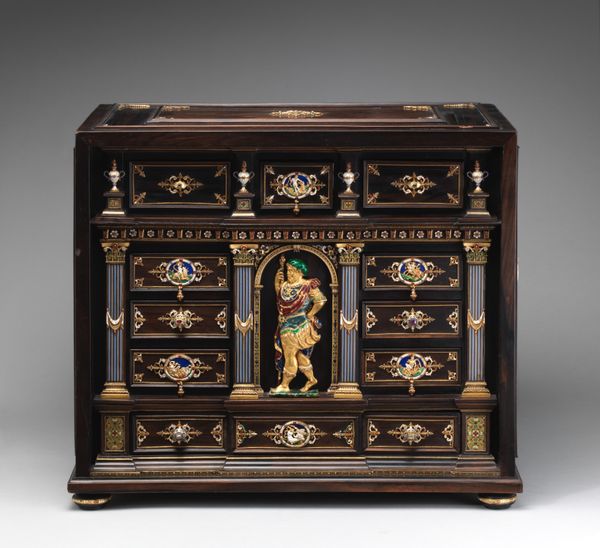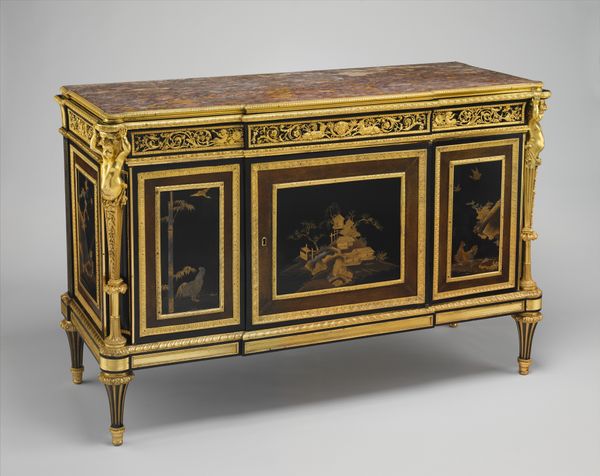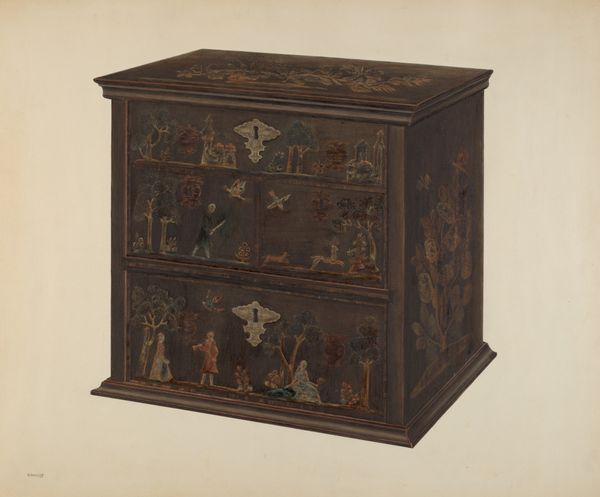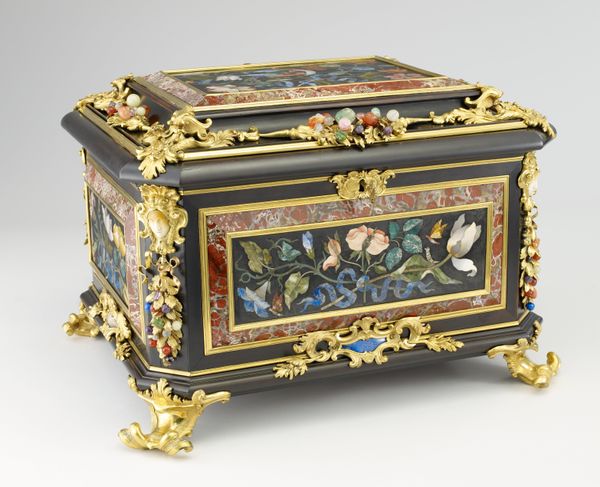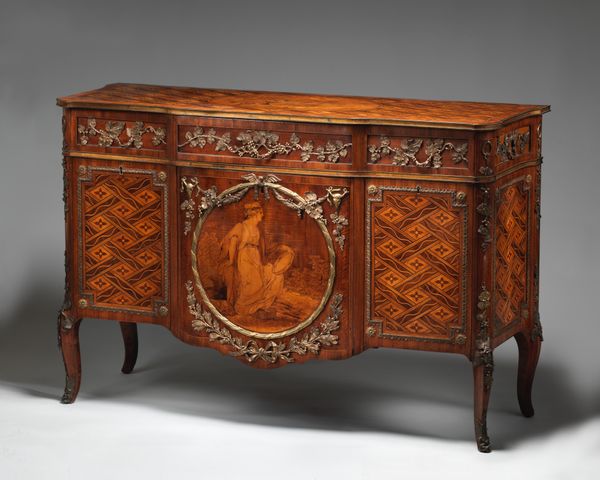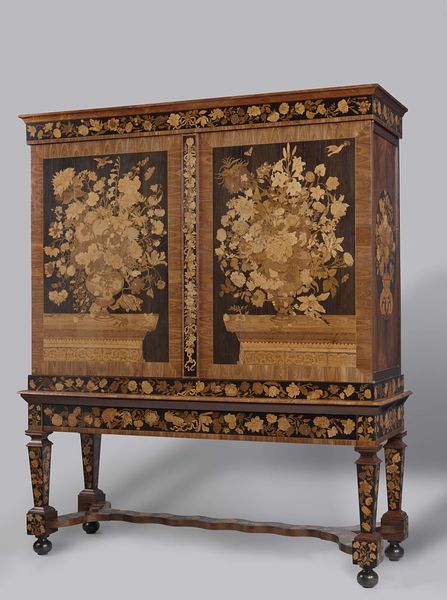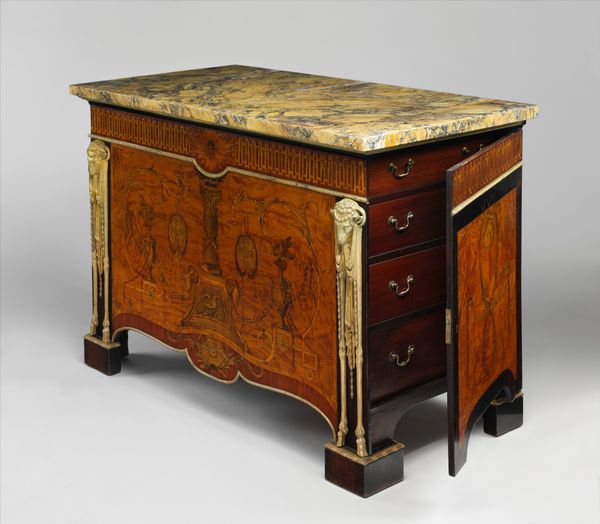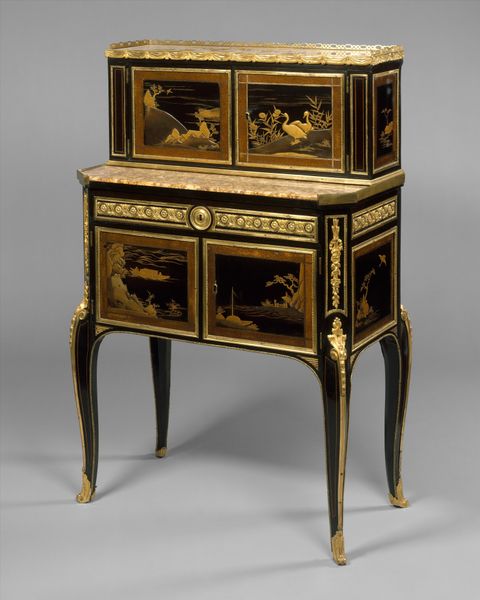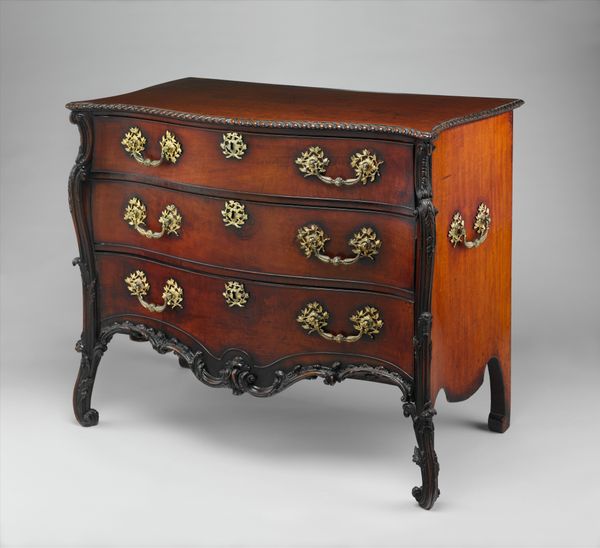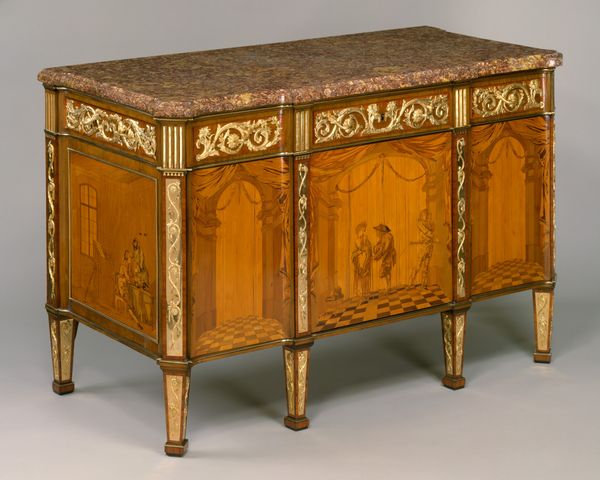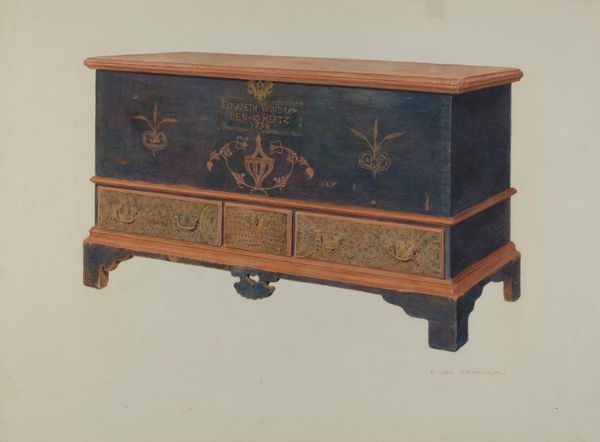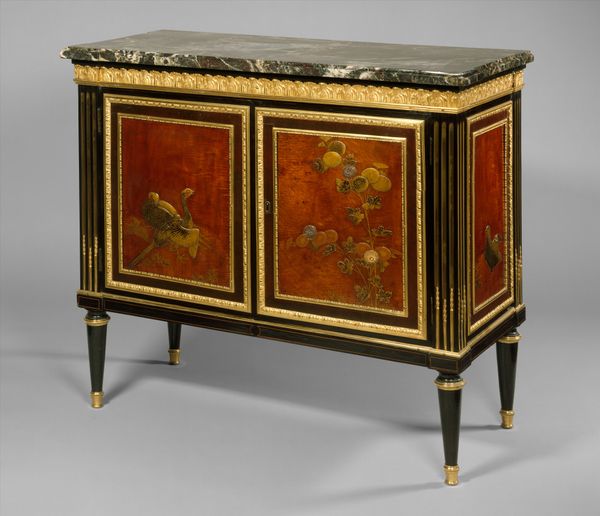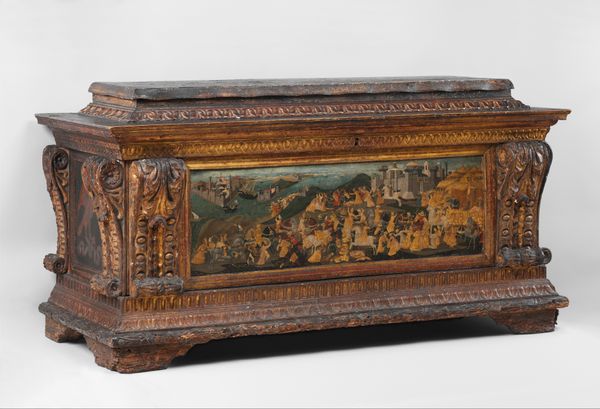
sculpture, wood
#
furniture
#
mannerism
#
sculpture
#
men
#
neutral brown palette
#
wood
#
decorative-art
#
miniature
Dimensions: 23 1/4 x 38 1/8 x 14 1/8 in. (59.1 x 96.8 x 35.9 cm)
Copyright: Public Domain
Editor: This is the Barberini Cabinet, made between 1601 and 1628 by the Galleria dei Lavori in Florence. It's currently housed at the Metropolitan Museum of Art. The cabinet is quite striking, with its dark wood and all the miniature scenes. It seems almost like a little world contained within furniture. What stands out to you when you look at this piece? Curator: Well, for me, it's impossible to separate it from its original social context. These cabinets, often filled with precious objects, were status symbols for elite families like the Barberini. It speaks to the rise of mercantile wealth and collecting as demonstrations of power. Consider where this would have been placed, perhaps in a *studiolo*, a space dedicated to learning and contemplation. Editor: So, it's not just decorative; it's communicating something about the owner? Curator: Precisely! Think about the labor involved: the craftsmanship of the cabinet makers, the miniaturists. These elaborate objects reinforced social hierarchies. Are the scenes just decorative, or could they have served a political function? What stories might they be alluding to? Editor: Hmm, the miniature scenes… Many show humans with animals and flowers. Are these popular fables, then, communicating morals? How might we interpret them today, given their original function? Curator: Exactly! It makes you wonder, doesn't it? How do *we* exhibit and interpret objects from different cultures and periods? And what responsibilities do museums have in presenting these complex narratives? Editor: It makes me think about what other political objects might be in the museum that I see simply as decorations. Thanks, this cabinet gave me a lot to consider! Curator: And thank you for prompting me to think more deeply about the museum's role as a cultural institution shaping how we understand the past.
Comments
No comments
Be the first to comment and join the conversation on the ultimate creative platform.
